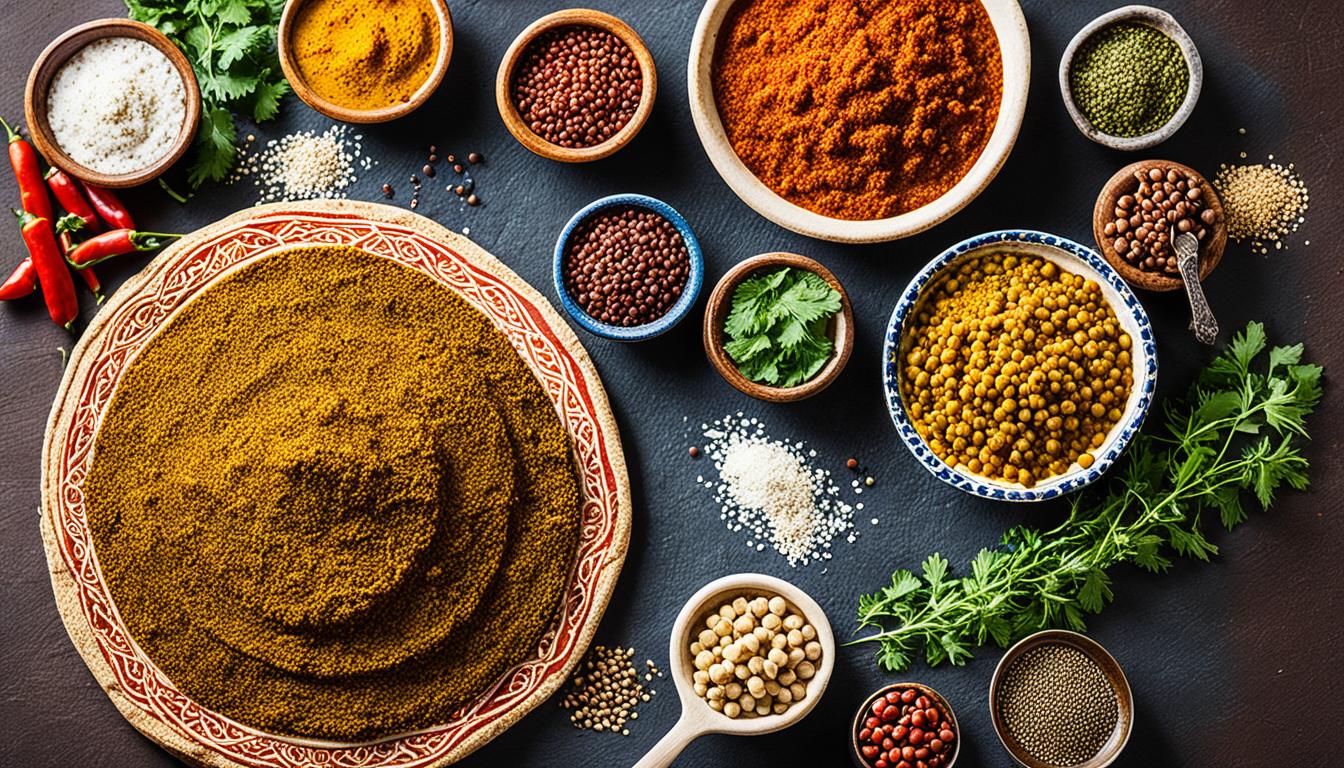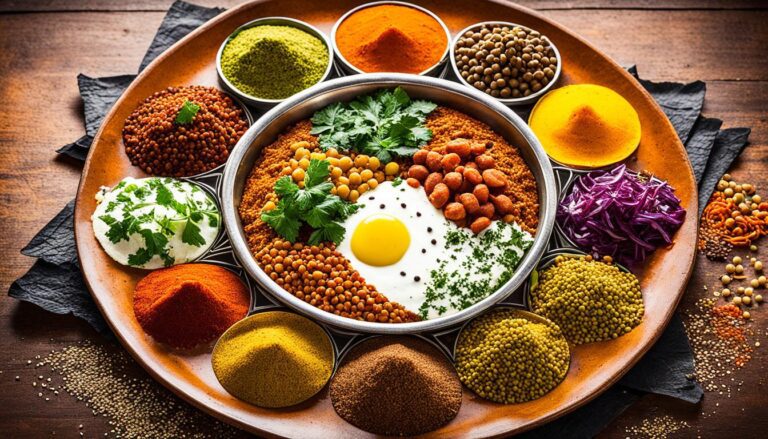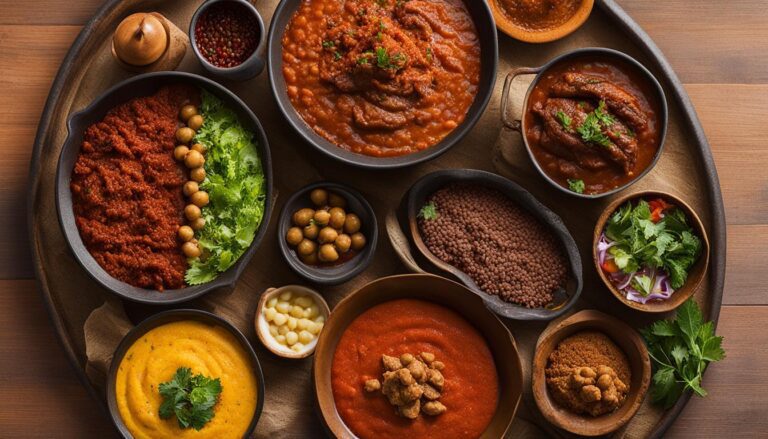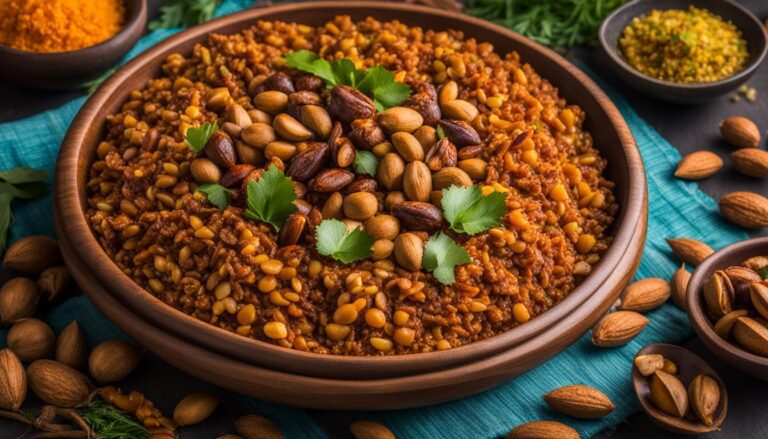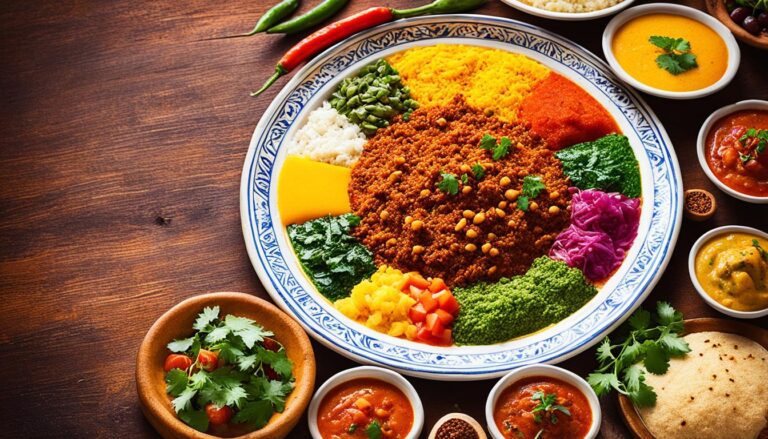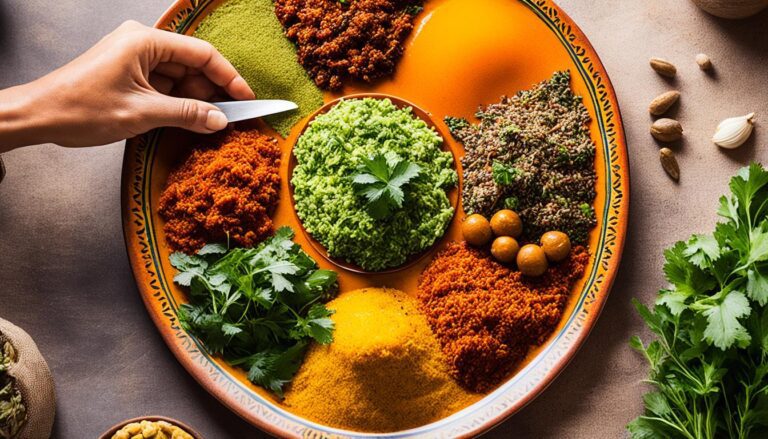Why Is Ethiopian Food Similar to Indian?
Have you ever wondered why Ethiopian food shares intriguing similarities with Indian cuisine? From the rich flavors to the aromatic spices, there is a culinary connection that goes beyond borders. So, what exactly is the link between these two distinct culinary traditions? Join us on a culinary journey as we explore the fascinating similarities and uncover the shared flavors that unite Ethiopian and Indian cuisines.
Key Takeaways:
- Both Ethiopian and Indian cuisines feature rich flavors and aromatic spices.
- The use of spices, such as berbere and traditional Indian spice blends, contributes to the similarity between the two cuisines.
- Injera, a sour bread in Ethiopian cuisine, has similar characteristics to Indian dosas.
- Historical trade, cultural exchanges, and migration have played a significant role in shaping the culinary traditions of both regions.
- Religious and cultural influences have influenced the ingredients and preparations of Ethiopian and Indian dishes.
The Influence of Indian Spices
One of the key factors contributing to the similarity between Ethiopian and Indian cuisine is the use of spices. Ethiopian cuisine utilizes a spice blend called berbere, which shares some common ingredients, such as cumin, fenugreek, garlic, ginger, and cardamom, with Indian spices. The variations in spice blends create intensely flavorful and diverse dishes in both Ethiopian and Indian cooking.
Spice Blends: Exploring the Connection
The use of spices is deeply rooted in the culinary traditions of both Ethiopia and India. Ethiopian berbere and Indian spice blends showcase the artful combination of aromatic ingredients, lending unique flavors to their respective cuisines. While berbere incorporates a distinct combination of spices, such as red chili peppers, coriander, cinnamon, and cloves, Indian spice blends like garam masala or curry powder feature a fusion of herbs, spices, and seeds.
The result is a harmonious blend that enhances the taste and aroma of various dishes. Whether it’s the fiery kick of berbere in Ethiopian doro wat or the fragrant notes of garam masala in Indian butter chicken, these spice blends elevate the overall gastronomic experience.
Furthermore, the use of common spices like cumin, fenugreek, garlic, ginger, and cardamom in both Ethiopian and Indian cuisine creates a bridge between the two culinary traditions. These shared ingredients contribute to the familiar flavors found in dishes from both cultures.
Overall, the influence of Indian spices on Ethiopian cuisine showcases the interconnectedness of global culinary traditions and highlights the rich tapestry of flavors that exist across different cultures.
The Role of Injera in Ethiopian and Indian Cuisine
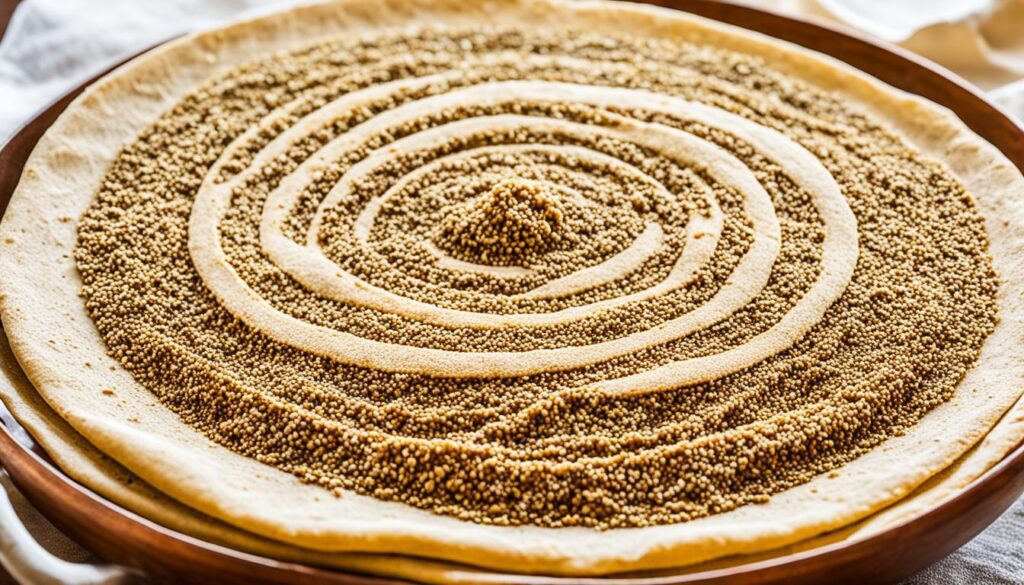
Injera, a sour, spongy bread made from fermented batter, plays a vital role in Ethiopian cuisine. It is similar in texture and function to the dosas of South India. Both injera and dosa serve as a versatile base for a variety of dishes and are often used to scoop up flavorful curries and stews.
The resemblance between injera and dosa not only extends to their physical characteristics but also highlights the culinary connections between Ethiopian and Indian food. These unique breads provide a delightful sensory experience, adding depth and texture to meals in both cultures.
Just like dosa, injera is a fundamental component of Ethiopian cuisine. It is served as a foundation upon which a vibrant assortment of meat, vegetables, and legume-based dishes are placed, blending flavors and textures harmoniously. The tangy and slightly fermented taste of injera adds a distinct touch to every bite, making it an unforgettable part of the Ethiopian dining experience.
By exploring the role of injera in Ethiopian and Indian cooking, we can appreciate the shared culinary heritage that transcends borders and unites different cultures. Whether it’s the warm and comforting dosas of India or the sour and spongy injera of Ethiopia, these traditional breads contribute to the depth and richness of their respective cuisines.
The Culinary Connection: Injera and Dosa
The resemblance between injera and dosa goes beyond their physical appearance. Both breads are made from fermented batter and exhibit a unique texture that enhances the overall dining experience. Injera and dosa serve as vessels for delicious curries and stews, providing a delightful combination of flavors, spices, and ingredients.
Historical Trade and Cultural exchanges
Ethiopia and India have a long history of trade and cultural exchanges that have greatly influenced their respective cuisines. The flow of goods and ideas between these two regions has played a significant role in shaping the culinary traditions we see today. Trade routes through the Indian Ocean facilitated the exchange of spices, fabrics, and other commodities, introducing new ingredients and flavors to both Ethiopian and Indian cuisine.
This cultural interplay goes beyond mere trade; it encompasses migration and assimilation as well. For example, Ethiopian slaves were brought to India, bringing their culinary knowledge and adding a distinct Ethiopian influence to certain dishes. Indian architects also contributed to Ethiopian architectural projects, further illustrating the deep cultural ties between these two countries.
This rich historical tapestry of trade routes, import-export relationships, and cultural influences has left a lasting impact on the culinary landscapes of Ethiopia and India. It is fascinating to explore how these connections have shaped the flavors and traditions that we enjoy today.
Trade Routes and Cultural Connections
The beginnings of trade between Ethiopia and India can be traced back to ancient times. The Indian Ocean served as a vital conduit for the exchange of goods, allowing spices, textiles, and other commodities to reach distant shores. This trade not only sustained economic growth but also fostered cultural exchanges and cross-pollination of ideas.
As trade flourished, so did the cultural influences. The importation of Indian spices, such as cumin, cardamom, and fenugreek, found their way into Ethiopian cuisine, adding new dimensions of aroma and flavor. Similarly, Ethiopian spices, like the quintessential berbere blend, made their way into Indian kitchens, infusing their dishes with a touch of Ethiopian flair.
These trade routes not only brought ingredients but also facilitated the sharing of culinary techniques and cooking methods. The cross-cultural exchange of culinary knowledge contributed to a rich tapestry of flavors and culinary practices that we continue to savor today.
Religious and Cultural Influences
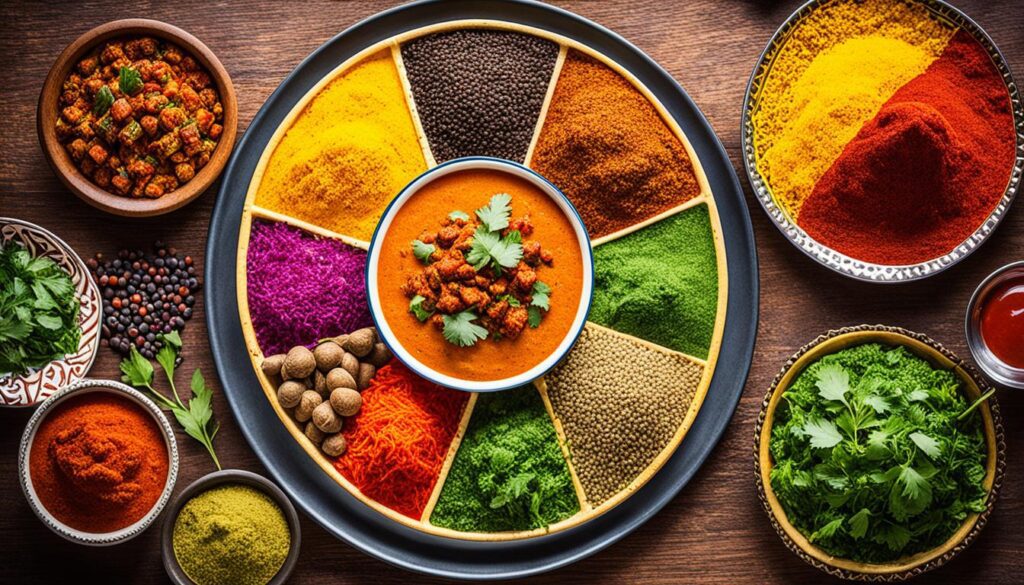
The religious and cultural diversity in Ethiopia has played a significant role in shaping the country’s culinary traditions. With historical associations with Christianity, Islam, and Judaism, Ethiopia showcases a vibrant fusion of flavors and ingredients influenced by these religions.
Similar to India, religious dietary rules in Ethiopia have a profound impact on the ingredients and preparations of dishes. Fasting periods and dietary restrictions followed by both countries have given rise to a wide range of vegetarian and vegan-friendly options in Ethiopian cuisine, catering to diverse dietary needs.
This religious influence has led to the creation of unique flavor profiles in Ethiopian dishes. Aromatic spices, fresh herbs, and hearty legumes are expertly combined to create tantalizing flavors that reflect both the spiritual and cultural heritage of the country.
Parallel to India, where religious dietary practices have shaped the culinary landscape, Ethiopia’s diverse religious tapestry contributes to the country’s rich and vibrant culinary traditions. Exploring Ethiopian cuisine offers a glimpse into the intersection of religion, dietary rules, and culinary traditions.
Vegetarian and Vegan Options
Due to religious fasting periods and dietary restrictions, both Ethiopia and India offer a plethora of vegetarian and vegan options. These dishes not only cater to the religious observances but are also beloved by individuals seeking a plant-based diet.
From lentil stews and vegetable curries to flavorful grain dishes, Ethiopian and Indian cuisines provide an array of satisfying choices for those following vegetarian or vegan lifestyles. The ingenious use of spices and herbs ensures that these dishes are bursting with flavor, making them a delightful experience for all palates.
The religious and cultural influences in Ethiopia and India have fostered a deep connection between food and spirituality. By embracing these culinary traditions, individuals can embark on a cultural and gastronomic journey that celebrates diversity and culinary artistry.
Religious and cultural influences have shaped the culinary traditions of Ethiopia and India.
Globalization and Ethiopian Cuisine
Ethiopian cuisine has gained widespread recognition and admirers across the globe, thanks to the vibrant Ethiopian diaspora and the establishment of authentic Ethiopian restaurants in numerous countries. The United States, Australia, and Europe, in particular, have witnessed a surge in Ethiopian restaurants, introducing people from diverse backgrounds to the delightful flavors and unique dishes of Ethiopian cuisine.
The rising interest in world cuisine has played a significant role in increasing the recognition and appreciation of Ethiopian food beyond its borders. As people seek out new culinary experiences and explore the rich diversity of world flavors, Ethiopian cuisine has emerged as a favorite choice for those looking to embark on a delicious and captivating gastronomic journey.
Conclusion
Ethiopian cuisine and Indian cuisine share fascinating similarities that highlight the interconnectedness of global culinary traditions. Both Ethiopian food and Indian cuisine offer a diverse range of flavors and culinary experiences that captivate the taste buds and create memorable dining experiences.
The use of aromatic spices is a common thread between Ethiopian and Indian dishes, with both cuisines utilizing a wide array of ingredients to create rich and flavorful meals. The spice blend berbere in Ethiopian cuisine resonates with the vibrant and aromatic spices found in Indian dishes, showcasing the culinary influence between these two regions.
Another striking similarity lies in the staple breads of Ethiopian and Indian cuisine. Injera, the spongy sour bread of Ethiopia, and dosa, the thin pancake-like bread of South India, both serve as versatile bases for various dishes and enhance the overall dining experience.
The historical trade routes and cultural exchanges between Ethiopia and India have further contributed to the culinary parallels. With the movement of spices, ingredients, and culinary practices, both cuisines have evolved and developed unique yet intertwined culinary traditions.
Exploring Ethiopian food allows individuals to embark on a captivating culinary journey that not only introduces them to a diverse range of flavors but also showcases the intriguing similarities with Indian cuisine. By discovering the interconnectedness of global cuisines through Ethiopian and Indian culinary traditions, we celebrate the richness and diversity of world cuisine.

